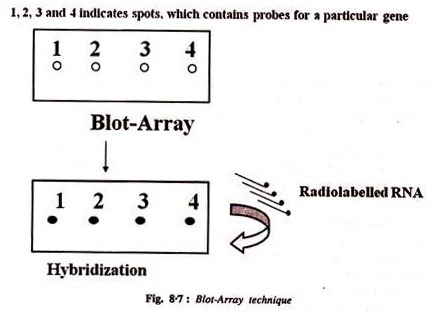In this article we will discuss about the Mendel’s tri-hybrid and multi-hybrid crosses.
Mendel extended his observations to tri-hybrid crosses involving three pairs of contrasting characters. The characters he considered were: seed shape—smooth (S) vs. wrinkled (s); colour of cotyledons—yellow (Y) vs. green (y); and flower colour—violet (V) vs. white (v).
The F1 hybrid produces 8 types of gametes. These on selfing have equal chances to combine with any of the 8 types of gametes produced by the other parent resulting in 64 different combinations. All the dominant phenotypes are expressed. In this way it is possible to predict genotypes and phenotypes in F2 of crosses involving more than 3 genes (multi-hybrid crosses).
In each case number of gametes formed by F1 heterozygote is determined by the formula 2n, where n represents the number of characters. Thus in a tri-hybrid cross 23 = 8 gametes result.
In a cross involving 4 characters, 24 = 2 x 2 x 2 x 2 = 16 gametes must result. The number of F2 phenotypes resulting from selfing F1 hybrid is a square of the number of gametes. Thus in a tri-hybrid cross there are 8 x 8 = 64 phenotypes, in a tetra-hybrid cross 16 x 16 = 144 phenotypes, and so on.
The experiments of Mendel laid the foundations of our knowledge of heredity. After seven years of detailed investigations he formulated his Principles and presented them at two meetings of the Natural History Society of Brunn in 1865. His results were published in the Annual Proceedings of the Society in 1866, which was distributed in the libraries of Europe and America the same year.
But, unfortunately, nobody paid attention to this work and it remained un-recognised for 34 years. It was only in 1900 that three scientists—Correns in Germany, De-Vries in Holland and Tschermak in Austria independently rediscovered the same principles of heredity, and the significance of Mendel’s work was realised.
